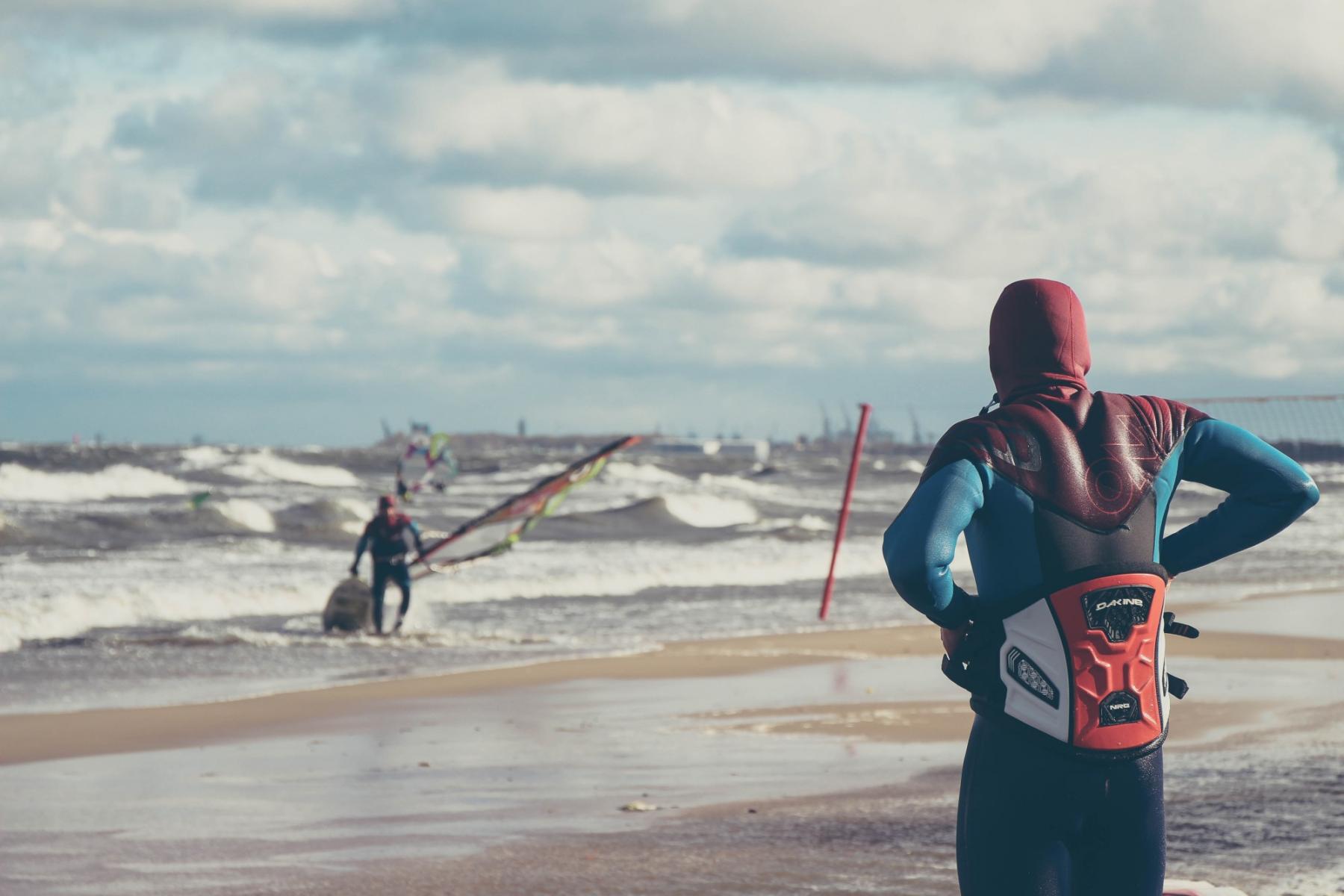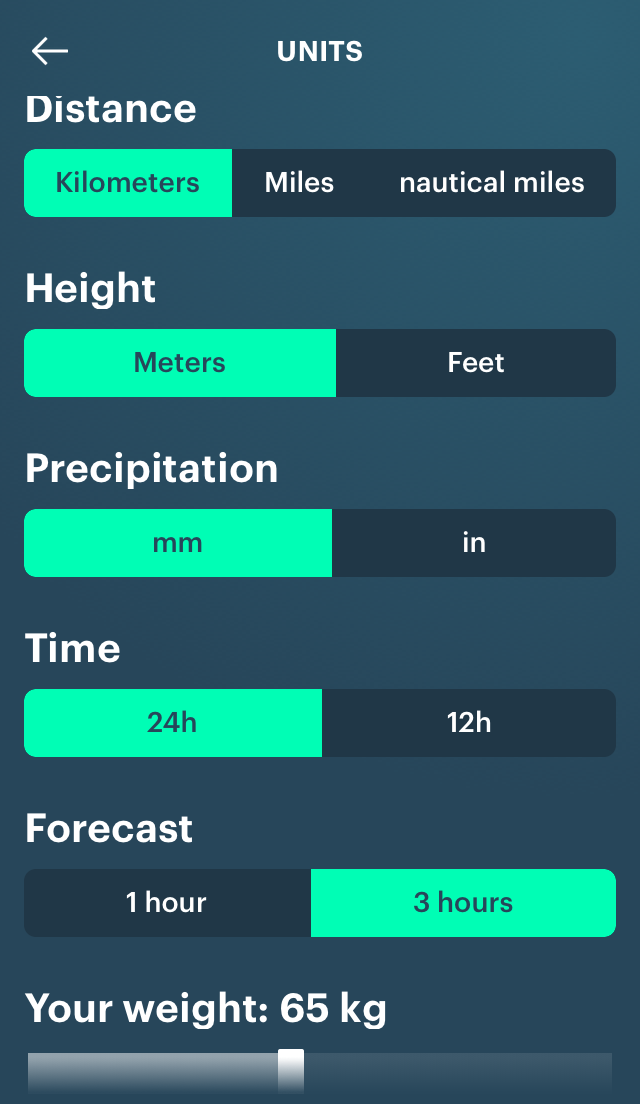
How to choose the right windsurf sail size
Windsurfing is a popular sailing and water activity. The rider moves through the water on a light board due to the traction force generated in the sail. Almost any open water is suitable for windsurfing. The main thing is to choose the right windsurfing sail size to get the most out of your favorite water sport.
What is a windsurf sail?
Sports equipment used in windsurfing consists of a light streamlined board 2.0 — 4.7 m long, made of floating material, and a sail.
The sail is the most important piece of windsurfing equipment. An athlete's skill and weight, riding style and wind speed will influence sail selection.
A windsurf sail is a wing-shaped canvas made of synthetic material or a durable film. It rests on a mast that is attached to the board. Most sails have armor — transverse rigid plates that increase the rigidity and shape of the sail.
You can ride windsurf in displacement or planing modes, that is, at high speed — it all depends on the skill level of the rider. Advanced athletes master the technique of moving on the waves, and can also perform jumps of varying degrees of difficulty.
There are five main windsurf sails types on the marker: beginner sails, freeride sails, slalom sails, freestyle sails and wave sails. Learn more about each of them in this article.

Brett-jordan / Unsplash
How to choose the right windsurf sail size for windsurfing?
The main criterion when choosing a sail for windsurfing is its size. For certain types of windsurfing, sail shape and durability of sail are also important.
If the sail is incorrectly selected, the rider may lose control, be injured or be unable to develop sufficient speed.
To choose the right sail for windsurfing, it is important to consider several parameters. The choice of sail size depends on, as a general rules:
Skill level
The better an athlete is at windsurfing, the larger sail he can afford. Otherwise, if a beginner overestimates his strength and takes a sail that is too big for him, it’ll be difficult to correctly set the riding technique. A large sail will pull forward, which will cause the rider to constantly fall, and he will also risk injury or tearing his back due to an incorrect stance. A beginner should start with 3-4 m² sails, while a professional can afford larger sails.
Place of windsurfing and average wind speed there
The stronger the wind, the smaller the sail. On the same spot, the same amateur rider with a wind speed of 3 — 5 m/s can take a sail of about 7 m², and with a wind speed of 10 — 12 m/s he’ll be comfortable on a sail of 4-5 m². If the rider makes a mistake and takes a sail that is too small, then he won’t have enough traction and won’t be able to fully ride.
Weight of windsurfer
The heavier the rider, the larger the sail they can take. For example, with the same wind conditions and skill level for a 50 kg girl, 4 m² sail is suitable, and for 70+ kg man — 5.5 m² sail. Otherwise, the consequences will be the same: if the sail is too large, the rider will lose control and will constantly fly forward from the board, risking injury and breaking the sail. And if too small, he won't have enough traction to gain the desired speed.
If you can, it is best to have multiple sails for different wind conditions. Optimal number of sails: 2 or 3 — for light, medium and strong winds.

Michal-parzuchowski / Unsplash
What is a windsurf size chart?
Windsurf size chart is a unified chart of rider parameters and skills and riding conditions to help you choose your sail and board. As a rule, such tables are created by equipment manufacturers and windsurfing schools. Please note that the data in this table is approximate.
So from the windsurf sail size guide below you can choose your sail and board size for freeride depending on the average wind speed and your weight.

Windsurf sail size chart. Valerya Milovanova / Windy.app
What are typical and most popular windsurfing equipment sizes?
As a rule, beginners go out into the water in a relatively light wind, no more than 6-7 m/s and use sails up to 4.5 m². The main thing is that the wind blows towards the shore or along it, otherwise only rescue boats or jet skis will be able to return beginners to the shore. The size of a beginner's board will depend on the rider's weight, but in general, boards with a displacement of +/- 180 liters are suitable for training.
For amateur riders, boards in the range of 120 — 160 liters and sails from 4 m² are suitable depending on the wind conditions. With a weak wind (5-6 m/s) you can choose a sail up to 7 m², and with a stronger one (10+ m/s) — 3.5-4 m².
The rider's gender doesn’t affect the choice of equipment — it all depends on skill, wind and weight.
There's special equipment for teaching children — the sail size can be less than 1 m².
Where to find windsurf size in Windy.app?
You can choose the size of your sail using the windsurfing sail size calculator in Windy.app. Yes, there is one! You don't need to make calculations. So this is how windsurf sail size guide works in Windy.app:
1. From the Home screen of the app, go to the Main menu, then Settings > Units. Here at the bottom of the page, enter your exact weight:

2. Open the nearest or your favorite spot in the app — for example, Tarifa, Spain. To make a spot a favorite click on the star icon to the right of its name:
3. Choose a Windsurf weather profile by the icon to the right of the weather models with a preset of 10+ weather parameters you need to know for windsurfing:
4. Then look at the weather parameters — now you see the exact sail size depending on the two main parameters for choosing the windsurf sail: your weight and wind speed.
5. As a general rule, together with a calculator, use also the windsurf sail size chart and other advice from this article.
Read mini guide to windsurfing with Windy.app for iOS.
Learn more about how to read the surf / swell forecast in a special Windy.app presentation with examples and tips from professional surfers with many years of experience of riding the biggest and best waves on the planet.
Text: Natalia Kirasheva
Cover photo: Mads-schmidt-rasmussen / Unsplash
You will also like
The collection of articles about kitesurfing
Latest News
Professional Weather App
Get a detailed online 10 day weather forecast, live worldwide wind map and local weather reports from the most accurate weather models.
Compare spot conditions, ask locals in the app chat, discover meteo lessons, and share your experience in our Windy.app Community.
Be sure with Windy.app.



